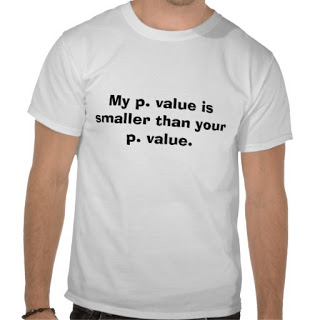Why not 0.06?

Steve Accera asked me an interesting question a few months back. Why is 0.05 the cut-off for a p-value to be considered statistically significant?
To understand the answer to this question, we first have to talk about how to interpret a p-value in the first place. For the expanded explanation, click here. Read More...
You are going to die.

So there’s been ANOTHER study on some food and mortality. Last time, it was red meat. This time, it’s eggs. To be honest, I’m not even going to read it. (Ok, I lied. I read it. Who are we kidding?) It’s not the first study on eggs. It won’t be the last. And it definitely won’t be the last study of its kind in terms of trying to link what is really a very small part of life to mortality.
Being in medicine (yes, even in plastic surgery) has taught me a lot of thing, but one sure-fire experience is death, and dying. Most people in our society get very limited exposure to death, and fewer to dying. Most of us will only experience death when family members or friends die, which hopefully isn’t that frequent. Very few people have experienced dying–not many people sit with the dying anymore (in my experience). Some of us will personally face death prematurely, but recover, which may or may not change our view on life. Read More...
My tennis elbow protocol: For posterity’s sake.

A long time ago, but not so far away, I did a PhD. My area of expertise is primarily in research methods and biostatistics, but you can’t do a degree in methods and stats without a content area, so my content area is musculoskeletal health–which does carry over to what I do now (how about that?) Since I wanted to focus on developing and experimenting with new research methods and analytical techniques, I picked a disease that was very common, so that I wouldn’t run into recruitment issues; because there’s nothing worse than putting a year’s worth of work into writing a protocol, getting ethics approval, funding and everything in place only to find that it’s going to take the next 8 years to meet your sample size. So to avoid this problem, I picked tennis elbow, because everyone and their dog has tennis elbow. And there are no magic bullets to treat tennis elbow.
I learned a lot in that PhD (there’s a mild understatement.) I keep learning now. But out of that PhD arose my opinion on how to treat tennis elbow. At one point, there was a post on jpfitness.com that outlined the protocol, but it seems to have vanished. And recently, Scott Baptie was interested in at least reading about it and I had no where to point him. So, for posterity’s sake, here’s my protocol for tennis elbow. Read More...